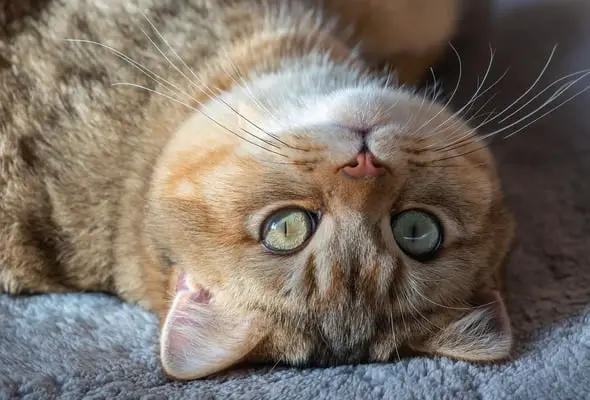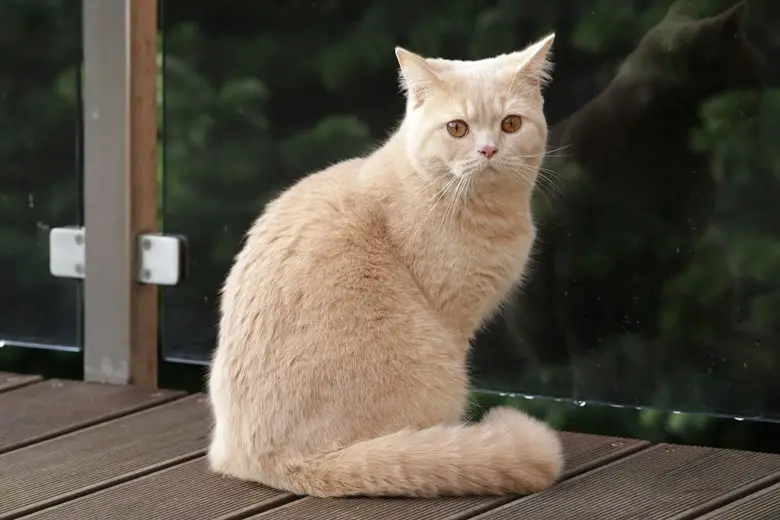If you own or have ever kept a cat, you’ll know that cats are extremely communicative creatures. Without a shared language, the bonds we share with our cats are largely dependent on our interpretations of their expressions and behaviors. For most pet owners, one of the most reliable ways to gauge a cat’s mood is by checking the position and movement of its tail.
However, as something we lack, most people know very little about the biology and purpose behind them. What do cats use their tails for? Do cats have bones in their tails?
Do Cats Have Bones In Their Tails?
Yes, cats do have bones in their tails. In fact, the tails of all mammals share a similar basic structure composed of bone, cartilage, muscle and skin. A cat’s tail is an extension of the animal’s spine, beginning at the pelvis and extending backwards.
The bones in a cat’s tail provide a rigid structure that gives the animal control over its appendage. Without the scaffolding that bones provide, cats’ tails would hang limply behind them and would not function.
Naturally, you may be wondering what cats use their tails for and why they have them. While it is well known that cats use their tails to communicate with humans and other cats, communication is not their primary purpose, and they actually serve a more vital role in the animal’s wellbeing and health.
To answer these questions, we’ll review the biology, as well as discuss the various ways cats use their tails.
How Does A Cat’s Tail Work?
As you now know, the bones in a cat’s tail provide a structural framework that allows for the tail’s controlled movement. Although connected to the base of the spine at the pelvis, the bones in a cat’s tail are specialized and differ greatly from its spinal vertebrae.
These bones are called caudal vertebrae and are recognizable from their distinctive shape, size and functionality.
A cat’s spinal vertebrae are large, dense, and closely linked together, providing a structure that can support the bulk of a cat’s weight. By comparison, the caudal vertebrae are not meant to bear weight, and so appear longer and more narrow, favoring length over support.
To get a better sense of what these bones look like, you can examine a cat’s tail up close and gently feel along its length.
Just as the bones in a cat’s tail are not suited for bearing weight, the muscles that articulate these bones are long, thin and fairly weak. As the sole purpose of these muscles is to control the motion and position of the tail, they are unable to lift or grasp objects.
Why Do Cats Have Tails?
The structure and shape of the bones in a cat’s tail largely reflect their function. First and foremost, cats use their tails to offset their body weight, offering stability and balance while in motion.
Their tails accomplish this balancing effect by swinging to and fro. When a cat moves, it shifts its center of gravity from one side of its body to the other, just as we do when we walk. As the weight shifts to one side, the tail will flick to the opposite side, serving as a counterbalance.
The length of a cat’s tail contributes to this stability, providing greater leverage the farther away it is from a cat’s center of gravity. For this reason the bones in a cat’s tail are long and thin.
Notably, the myth that cats have nine lives in part can be traced to how helpful their tails really are. When falling from great heights, cats use their tails to leverage their weight and contort their bodies in mid air, ensuring they will land on their feet and not on their heads or spines.
To many people, a cat’s uncanny ability to avoid serious injury from a fall can seem like cheating death.
How Do Cats Communicate With Their Tails?
While the primary function of a cat’s tail may be its use as a counterbalance, people are more familiar with the ways that cat’s use their tails to communicate with us.

An upright tail positioned at a ninety degree angle to the cat’s spine can signify a cat’s comfort and confidence in its environment, while a lowered or hidden tail can mean your cat is unsure or anxious.
Cats will often show their affection by rubbing against someone, lightly wrapping the tip of their tail around your leg or ankle.
The speed at which your cat flicks its tail can also mean different things in a variety of contexts, ranging from focus to agitation.
It’s important to note that individual cats will have different signs and tells, and the best way to understand what your cat’s tail is communicating is by spending time with your pet and observing its behavior.
Can Cats Survive Without Their Tails?
Yes, cats can survive without their tails, although their quality of life will likely be diminished, as their ability to communicate and balance may be affected. This is particularly true for cats born with tails that lose them later in life.

Injury and infection are the primary causes of tail loss in cats, with vets sometimes removing a cat’s tail if unable to heal properly. This is done in order to avoid the injured tail becoming a source of chronic pain.
Notably, there are cat breeds that are born without tails or with extremely short tails. For example, the tailless gene is present in the various Bobtail Cat breeds as well as in the Manx Cat.
The absence of tails in these breeds is not a natural occurrence, but due to selective breeding by humans. The absence of a tail has no known benefits, with the trait being extremely rare in wild cat species.
Conclusion
As we’ve learned, cats have bones in their tails called caudal vertebrae. These bones allow cats to manipulate and control their tails, which they use to help them balance while in motion, as well as for communicating with humans and other cats.
Now that you know how cats use their tails, take a moment to watch your pet cat navigate your home while following the motions of its tail as it flicks from side to side.
We also encourage you to check out slow motion footage of a cat falling, which will show you exactly how they accomplish this amazing feat.

